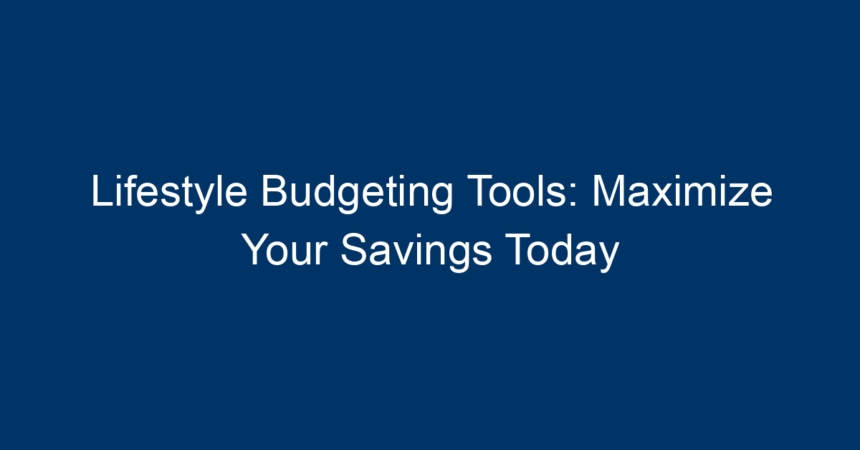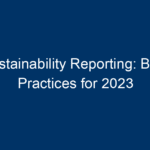In an era where financial literacy is more crucial than ever, understanding how to effectively manage your money can be the key to achieving your financial goals. Whether you’re saving for a dream vacation, a new home, or even retirement, having the right lifestyle budgeting tools at your disposal can make a significant difference. This article will guide you through essential budgeting tools and strategies to help you maximize your savings today.
What Are Lifestyle Budgeting Tools?
Lifestyle budgeting tools are various methods, applications, and frameworks designed to help individuals manage their expenses and savings effectively. These tools provide a holistic view of your financial situation, enabling you to make informed decisions. They can range from simple spreadsheets to sophisticated apps that sync directly with your bank accounts.
The Importance of Budgeting
Budgeting is not just about restricting your spending; it’s a proactive approach to understanding your financial health. By implementing lifestyle budgeting tools, you can:
- Track Your Expenses: Keep tabs on where your money goes each month.
- Set Financial Goals: Create realistic goals and monitor progress.
- Identify Savings Opportunities: Discover areas where you can cut unnecessary expenses.
Types of Lifestyle Budgeting Tools
Several types of budgeting tools can cater to various personal finance styles. Here are some of the most popular ones you can consider:
1. Budgeting Apps
In today’s digital age, budgeting apps have become a staple for effective money management. They offer features like automatic expense tracking, goal-setting, and financial advice. Some popular budgeting apps include:
- Mint: This app automatically syncs with your bank accounts and tracks your spending in real-time.
- YNAB (You Need A Budget): A proactive plan where you allocate every dollar to a specific goal.
- EveryDollar: Simplifies budgeting with its user-friendly design and allows you to customize your budget categories.
2. Spreadsheets
For those who prefer a more hands-on approach, spreadsheets can be an effective tool for budgeting. Programs like Microsoft Excel and Google Sheets allow you to create a personalized budget. You can:
- Customize Categories: Tailor your budget according to your specific needs.
- Use Formulas: Automatically calculate totals and remaining balances.
- Visualize Data: Utilize graphs and charts for a clearer understanding of your financial habits.
3. Envelope System
The envelope system is a cash-based budgeting method that’s ideal for individuals who struggle with overspending. Here’s how it works:
- Allocate Cash: Divide your cash into different envelopes representing various spending categories.
- Spend Wisely: Once the money in an envelope is gone, you can’t spend any more in that category until the next budget period.
4. Financial Planners and Consultations
If you’re looking for personalized advice, working with a financial planner can provide insights tailored to your unique financial situation. They can help you:
- Create a Comprehensive Financial Plan: Covering savings, investments, and debt repayment.
- Set Long-Term Goals: Assist you in mapping out a plan for future financial milestones.
Key Features of Effective Lifestyle Budgeting Tools
Selecting the right lifestyle budgeting tools is crucial. Here are some features you should look for:
1. User-Friendly Interface
The best budgeting tools are intuitive and easy to navigate. You shouldn’t have to struggle with complicated interfaces.
2. Real-Time Tracking
Instant updates on your account balances and transactions can help you stay on top of your spending.
3. Goal Setting and Progress Tracking
The ability to set financial goals and track your progress towards achieving them adds a motivational element to budgeting.
4. Compatibility with Multiple Devices
Your budgeting tools should be accessible from various devices, whether it’s a smartphone, tablet, or computer.
How to Maximize Your Savings with Lifestyle Budgeting Tools
To truly benefit from lifestyle budgeting tools, there are several actionable strategies you can implement:
1. Establish Realistic Goals
Before diving into budgeting, define what your financial goals are. This could range from building an emergency fund to saving for a particular purchase. Use your budgeting tools to set these goals and track your progress.
2. Regularly Review and Adjust Your Budget
Budgeting is not a set-it-and-forget-it task. Analyze your spending habits periodically and adjust your budget accordingly. If you find you consistently overspend in a certain category, consider reevaluating your budget or finding ways to save in that area.
3. Automate Savings
Many budgeting apps offer features that allow you to automatically transfer a set amount of money into your savings account each month. Set it and forget it — this way, you’re less tempted to spend that money.
4. Take Advantage of Discounts and Cashback
Many budgeting tools feature options to locate discounts and cashback offers. Use these tools to your advantage, making your money stretch further.
5. Educate Yourself on Financial Literacy
Improving your financial literacy will enhance your budgeting ability. Use resources like financial blogs, podcasts, and seminars alongside your budgeting tools to stay informed and motivated.
Overcoming Common Budgeting Challenges
Even the best lifestyle budgeting tools cannot eliminate all financial challenges. Here are some common obstacles and how to overcome them:
1. Emotional Spending
It’s easy to let emotions dictate your spending habits. Combat this by creating a “fun fund” within your budget for discretionary spending, which allows you to enjoy without guilt.
2. Unexpected Expenses
Life is unpredictable; unexpected expenses can derail your budget. Having an emergency fund can provide a safety net, making it easier to stick to your budget.
3. Getting Started
Many people struggle to start budgeting. Begin with a simple budget template and set a specific day each month to review your finances. Making budgeting a regular part of your routine will help you stay on track.
Conclusion: Take Charge of Your Financial Future
Lifestyle budgeting tools offer a pathway to better financial health. By choosing the right tools and implementing effective strategies, you can take charge of your finances and maximize your savings today. Remember, budgeting doesn’t have to be daunting; it can be empowering. Start small, make adjustments as necessary, and watch how your financial landscape transforms over time.
By harnessing the power of lifestyle budgeting tools, you have the opportunity to create a more secure and fulfilling financial future. Your journey to financial stability starts today—don’t wait to begin maximizing your savings!




